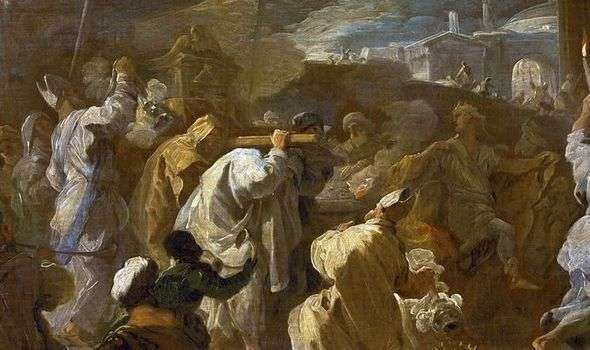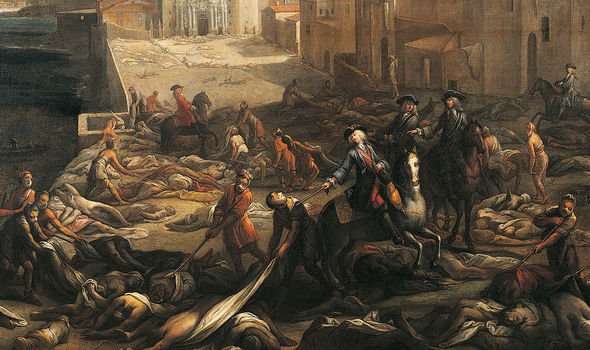THE BIBLE may have prophesied the outbreak of the Bubonic Plague after China confirmed one case in the northern province of Inner Mongolia, leading authorities to place the city of Bayan Nur under a level three warning for epidemic control.
The plague is caused by bacteria called Yersinia pestis that live in some animals – mainly rodents – and their fleas and is most famous for being the cause of the Black Death, which wiped out up to 200 million people more than 650 years ago. Those infected develop flu-like symptoms, including fever, vomiting, bleeding, organ failure, and open sores and if not treated immediately with antibiotics, the bacteria can spread in the bloodstream and cause sepsis and if the bacteria infect the lungs, it can cause pneumonia. It has been associated with three deadly outbreaks in the history of mankind, but the first warning of this devastating illness may have come in the Bible, according to researchers.
Trending
In chapters four to six of 1 Samuel, the Old Testament text describes how the Ark of the Covenant was captured by the Philistines and, after God wreaked havoc on several Philistine cities, it was returned to Israel.
Having captured the Ark of the Lord from the Israelites, the Philistines experienced an outbreak of ‘tumours’ and the affliction followed them as they moved the Ark from city to city.
Concluding that the Ark was responsible for this disaster, the leaders decided to return it to the Israelites along with a peace offering of five golden rodents.
The idea that this story proves the Bubonic Plague may have been active in Biblical times was first floated by academic JP Griffin, who wrote an article in 2000 on his theory.


But academic Frank R Freemon went one step further in the Journal of the Royal Society of Medicine by analysing the physical evidence.
He wrote in 2005: “Soon after the arrival of these statues, which were probably small wooden models covered with gold, in Beth-shemesh, 70 Israelites died in that city.
“Evaluating this epidemic, JP Griffin concluded that the outbreak was plague, with its associated buboes.
“But WMS Russell responded that Griffin was ‘certainly erroneous’ because of a mistranslation that the tumours were haemorrhoids due to dysentery, and because the rat carrier of plague was not in the region at the time of the described events.
“Since then, advances in archaeology have shifted the weight of evidence towards Griffin and the ‘emerods’ described the King James Bible appear in all modern translations as tumours.”

Mr Freemon went on to detail some of the evidence.
He added: ‘Recent archaeological evidence has caused a rethinking of plague in the ancient Near East.
“Fossilised remains of the plague flea have been found in large numbers in Amarna, Egypt, and, since Amarna was occupied for only a few years, we can date this contact between human beings and plague fleas accurately to about 1350BC – which is before the events described in the Book of Samuel.
“Moreover, archaeological studies in the Nile Valley indicate that the black rat was introduced at this time, probably via ships from India.
“Evidence of Bubonic Plague has not been seen in Egyptian mummies but all the vectors were in place.
“These vectors could have spread a few miles north to Philistia.”
DONT MISS
End of the world: How archaeologist discovered ‘real Maayan doomsday’ [VIDEO]
Mayan DISCOVERY: How find in ancient city ‘reveals creation story’ [CLAIM]
Egypt: How ‘greatest archaeological find of all time’ stunned expert [REVEALED]


Mr Freemon then delivered his verdict on the story.
He continued: “From the story, it seems that the most characteristic features of the epidemic were rats and tumours.
“Dead rats, killed by the same bacillus that kills human beings, are seen in the streets of plague towns, and enlarged lymph nodes in the groin and axillae are the most obvious features of the illness.
“Why did the Philistines send statues of rodents to their neighbours?
“One interpretation is that the Philistines were offering a friendly warning: ‘We have experienced an epidemic and these are the things you should look out for’.
“Another is that the statues represented the essence of the judgment that had descended upon the Philistines, who hoped that the affliction would be passed on.”
Sourse: www.express.co.uk





